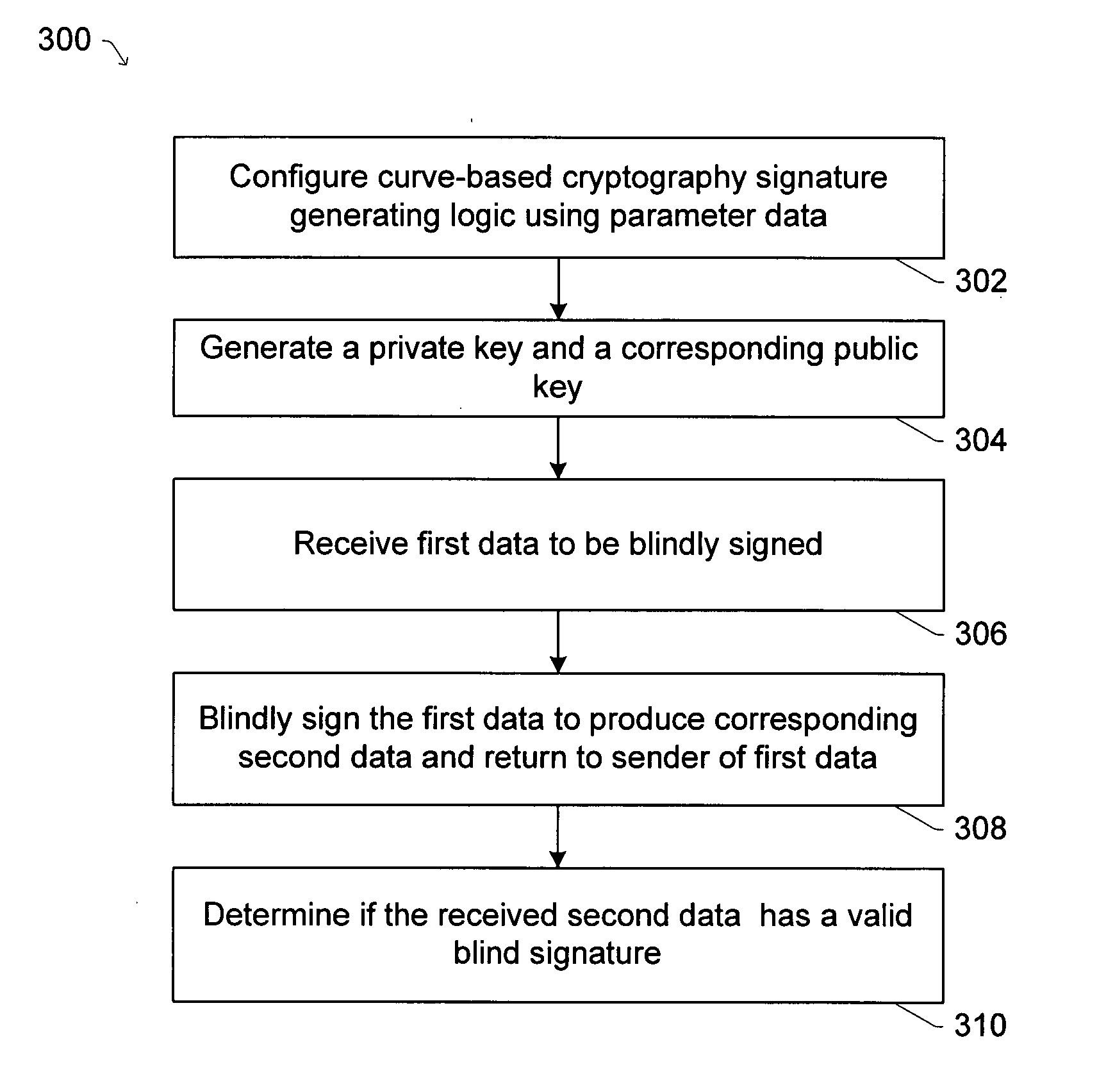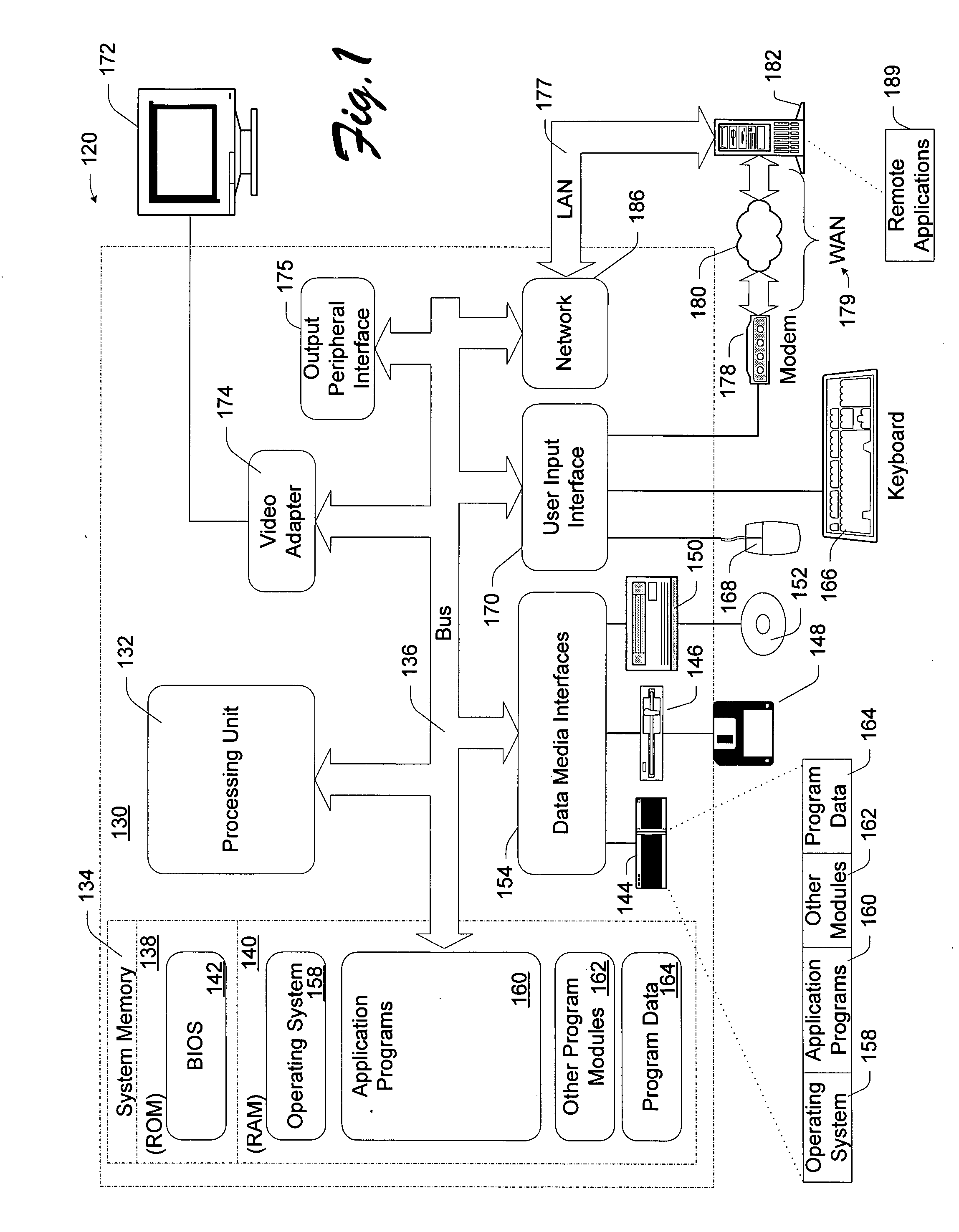Methods and apparatuses for providing blind digital signatures using curve-based cryptography
a curve-based cryptography and digital signature technology, applied in the field of cryptography, can solve the problems of difficult, if not nearly impossible, for those without the appropriate key to recover the plaintex
- Summary
- Abstract
- Description
- Claims
- Application Information
AI Technical Summary
Problems solved by technology
Method used
Image
Examples
Embodiment Construction
Introduction:
In accordance with certain aspects of the present invention curve-based cryptography techniques are provided for use in systems, apparatuses and methods.
Many of these techniques are based on the Computational Diffie-Hellman assumption on certain high genus order (e.g., genus greater than one) hyper elliptic curve groups. The resulting encryption is believed to be at least as strong as that produced by a conventional Digital Signature Algorithm (DSA) for a similar level of security.
Short digital signatures are often used in environments where a user is asked to manually input a digital signature. For example, product registration systems often ask users to key in a digital signature provided on a CD label. More generally, short digital signatures are also useful in low bandwidth communication environments. For example, short digital signatures may be used when printing a digital signature on a postage stamp.
Currently, the two most frequently used digital signatu...
PUM
 Login to View More
Login to View More Abstract
Description
Claims
Application Information
 Login to View More
Login to View More - R&D
- Intellectual Property
- Life Sciences
- Materials
- Tech Scout
- Unparalleled Data Quality
- Higher Quality Content
- 60% Fewer Hallucinations
Browse by: Latest US Patents, China's latest patents, Technical Efficacy Thesaurus, Application Domain, Technology Topic, Popular Technical Reports.
© 2025 PatSnap. All rights reserved.Legal|Privacy policy|Modern Slavery Act Transparency Statement|Sitemap|About US| Contact US: help@patsnap.com



